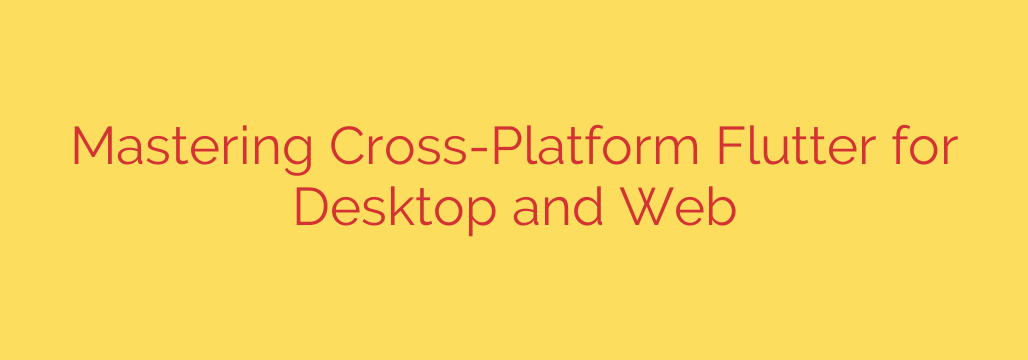
Building applications that run seamlessly across multiple platforms has long been a goal for developers. Traditionally, this meant writing separate codebases for each platform, leading to increased development time, higher costs, and maintenance headaches. The rise of cross-platform frameworks aimed to solve this, and Flutter has emerged as a powerful contender, particularly extending its reach beyond mobile to encompass desktop and web.
Harnessing the power of Flutter for desktop and web development allows teams to leverage a single codebase. This is a significant advantage, streamlining the development process and enabling faster iteration. Instead of managing disparate codebases for iOS, Android, Windows, macOS, Linux, and the web, you work within one unified framework using the Dart language.
Getting started with Flutter for these platforms involves setting up your environment and enabling the relevant support. The Flutter SDK provides the necessary tools. Once enabled, you can create new projects or configure existing ones to target desktop and web alongside mobile. This integrated workflow simplifies project management considerably.
However, developing for desktop and web presents unique considerations compared to mobile. User interfaces need to adapt to larger screens, different input methods (like mouse and keyboard interactions), and varying window sizes. Flutter‘s flexible widget system is key here. You can build responsive layouts that adjust gracefully across different display sizes. Handling mouse events, keyboard shortcuts, and even window resizing requires specific logic within your application.
Plugin compatibility is another important factor. While the Flutter ecosystem is vast, not all plugins originally built for mobile have full support for desktop or web platforms. Developers need to verify the support status of crucial packages or be prepared to implement platform-specific features using platform channels if absolutely necessary, although the need for this is diminishing as desktop/web support matures.
Performance is critical for any application. Flutter aims for high performance by compiling to native code for desktop and leveraging efficient rendering for the web. While optimization is always necessary, Flutter provides the foundation for building smooth, performant applications on these platforms.
The benefits of adopting Flutter for desktop and web are compelling. The single codebase dramatically reduces development and maintenance overhead. You can deliver consistent user experiences across different platforms, though adapting the UI for platform conventions is good practice. The expressive and flexible widget system allows for beautiful, custom designs. Furthermore, Flutter‘s fast development cycle with features like hot-reload speeds up the testing and iteration process.
Despite the advantages, developers might face challenges like initial build size for web applications or ensuring a truly native look and feel on every desktop operating system without significant customization. However, the framework is constantly evolving, with improved tooling and growing community support addressing these issues.
Looking ahead, Flutter‘s commitment to being a truly pervasive cross-platform framework means continued improvements for desktop and web. As the framework matures, developing robust, high-quality applications for these platforms using a single codebase becomes increasingly practical and efficient.
In conclusion, leveraging Flutter for desktop and web development offers a powerful and efficient way to build applications across a wide range of devices from a single codebase. By understanding the platform-specific considerations and utilizing Flutter‘s rich features and growing ecosystem, developers can create compelling user experiences on these important platforms.
Source: https://itnext.io/building-truly-cross-platform-flutter-applications-desktop-and-web-mastery-8c359592c661?source=rss—-5b301f10ddcd—4








